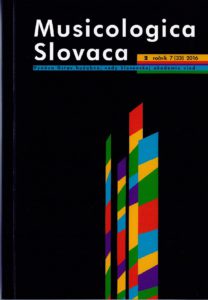Past and Present: Interpreting the Chant Notations of the Pray Codex
Past and Present: Interpreting the Chant Notations of the Pray Codex
Author(s): Gabriella GilányiSubject(s): Music, Local History / Microhistory, History of Art
Published by: SAV - Slovenská akadémia vied - Ústav hudobnej vedy Slovenskej akadémie vied
Keywords: codex; music paleography; staff notation; Esztergom; neumes; peregrination
Summary/Abstract: The paper examines the music scripts of the Pray Codex (Budapest, National Széchényi Library, Mny 1), one of the most important manuscripts of 12th-century Central European cultural history. This is not the first time that a systematic music paleographic review has been carried out: decades ago, the noted plainchant scholar, Janka Szendrei, subjected the notations of the codex to a detailed analysis, some of which she considered to be the earliest surviving examples of Esztergom staff notation. However, more recent studies have shown that the neume compositions of the 12th-century examples of the Pray Codex are rather undeveloped compared to the 13th–14th century Esztergom notation. There are no definitive neume forms, but there is a very rich range of variants belonging to a single neume type. Can this set of signs be considered Esztergom notation? In order to answer this question, contemporary comparative sources – the Krakow and Šibenik codex fragments – were also studied, and our examination made use of the most advanced digital techniques. We also tried to go further than Janka Szendrei as regards isolating and characterizing the notations of the Pray Codex, while also exploring the genesis of the Esztergom notation and, above all, by examining the role the French university peregrinations of Hungarian archpriests may have played in the formation of the musical literacy of the 12th-century Kingdom of Hungary.
Journal: Musicologica Slovaca
- Issue Year: 14/2023
- Issue No: 1
- Page Range: 35-54
- Page Count: 20
- Language: English

